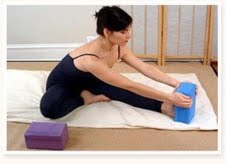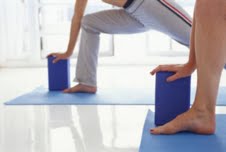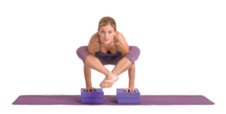Blocks are often used by beginners as well as those with injuries to help them modify certain poses, but they are also used by experienced yogis as tools to make the poses more challenging. The blocks help create space in the body, allowing the yogi to find alignment without exerting too much effort.
Beginners use blocks to gain a better feel for how their body should be positioned, for balance, and for support as they gain more strength and confidence. Every pose feels different and requires different levels of support. The blocks have three different levels, flat, middle and high depending on which side of the block is used. As your body becomes more flexible, you can lower the block setting so you are closer to the floor.
Blocks help aide the injured during the healing process to support their bones and the weight of their body. This causes the pressure that would normally be on the joints to be evenly distributed throughout the body. Blocks can make poses more comfortable, especially in seated poses. Sitting on a block will bring your hips above your knees, reducing pain if there is too much pressure on a certain muscle or joint.

Blocks can also be used to make poses more challenging. Placing a block beyond your reach can help you stretch your muscles even further, increasing flexibility.

If you like to work on more advanced poses such as inversions, the blocks help to keep your base steady.
